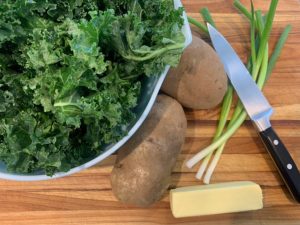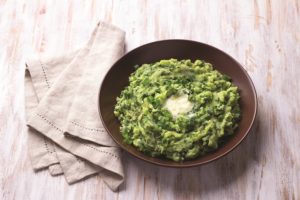When my sister-in-law and brother invited Christopher and me to join them on a hiking trip across Ireland’s Dingle Peninsula, you might be surprised to know, I didn’t say yes right away. I was dubious because hiking with Kristina and Brit would also mean hiking with our nephew Max. And although he already had a passport, Max wasn’t even a year old. When I’d laid eyes on him for the first time a few months earlier, Max was about the size of a basketball, smelled like goat cheese, and expressed his needs vigorously.
But we’re always up for an adventure.
A few days into our journey, we had one of those days that can inspire whining. We had missed our turn onto a designated sheep path earlier in the day, now darkness was falling, and we weren’t sure we were in the right place. We were all tired, cold, hungry, and cranky. All except Max, who’d been riding contentedly all week in his super high-tech baby backpack.

We headed into the pub marked on our map, and, settling ourselves next to a smoky but romantic peat fire, we ordered our first pints of the evening. This being Ireland, the bartender looked familiar. His name was Oisin (pronounced “O-seen”). And his brother lived in Boston.
On this trip, Christopher and I came to realize that so great is Ireland’s contribution to the New England gene pool that everyone there looks vaguely familiar.
“We’ve boiled bacon and cabbage, or sausages with colcannon tonight,” said Oisin. We knew to order the daily specials. Those times we didn’t, we regretted it, as we saw golden cottage pies or grilled north Atlantic fish served at neighboring tables. None of us knew what colcannon was, but we ordered it anyway. “Oh, that’s the good choice.” Oisin winked.
Halfway through our second Guinness, he set before us gorgeous plates of pork sausages braised in beer and herbs, served alongside an electric-green dollop of buttery mashed potatoes and, in this case, finely chopped kale with some spring onions tossed in for good measure. Colcannon created a perfect bed for the juicy sausages. After eating our fill, we found it hard to abandon our place before the fire. Jameson all around!
Colcannon gets its name from the Irish Gaelic for white-headed cabbage and, I’ve since learned, the dish is most often made with cabbage rather than kale. If there are leftovers, they can be shaped into three-inch cakes, dredged in flour, fried in a skillet until they’re brown on both sides, and served alongside eggs.
Colcannon is working people’s food — cheap and easy to pull together. But for us it’s a reminder of a cozy kind of luxury. We had it a couple of other times during our trip but never enjoyed it quite as much as that first time, warming ourselves by Oisin’s peat fire, with Max sleeping contentedly in his contraption.

Colcannon With Kale
Serves 6
2 lbs. floury potatoes such as russets, peeled and cut into large chunks
1½ lbs. kale (or cabbage or another sturdy green)
2 spring onions or 4 scallions, sliced fine
4 Tbsp. unsalted butter, plus additional for serving
1 cup half-and-half or milk
Salt and pepper to taste
In a pot of slowly simmering salted water, boil the potatoes until just tender.
While the potatoes are cooking, bring 3 or 4 inches of salted water to a low boil in a large pot. Add the kale (or other greens) using a long wooden spoon to turn it in the water until wilted. Allow the kale to cook for 3 or 4 minutes, then drain.
Once it is cool enough to handle, wrap the kale in a dishcloth and twist to remove as much liquid as possible. Chop the kale fine.
Bring the cream or milk to a low simmer along with the butter and the spring onions. When the butter is melted, remove from heat and allow to steep about 5 minutes.
When the potatoes are tender, drain them well and return to the pot. Turn the heat to low and allow the potatoes to dry out for a few minutes. Mash the potatoes until smooth. Fold in the kale and then add the milk and butter mixture.
Mix well, add salt and pepper to taste, and, just before serving, make a well in the colcannon for a small knob of butter to melt on top.



